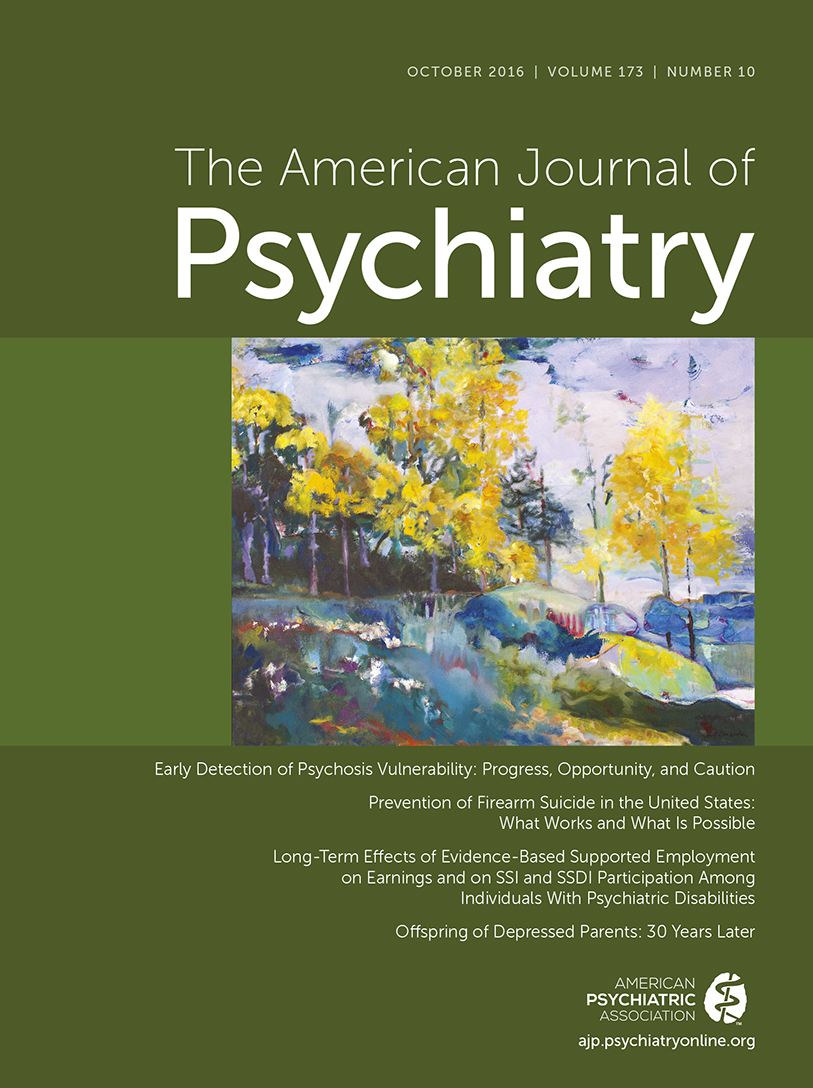Personalized Prediction of Psychosis: External Validation of the NAPLS-2 Psychosis Risk Calculator With the EDIPPP Project
Abstract
Objective:
As part of the second phase of the North American Prodrome Longitudinal Study (NAPLS-2), Cannon and colleagues report, concurrently with the present article, on a risk calculator for the individualized prediction of a psychotic disorder in a 2-year period. The present study represents an external validation of the NAPLS-2 psychosis risk calculator using an independent sample of patients at clinical high risk for psychosis collected as part of the Early Detection, Intervention, and Prevention of Psychosis Program (EDIPPP).
Method:
Of the total EDIPPP sample of 210 subjects rated as being at clinical high risk based on the Structured Interview for Prodromal Syndromes, 176 had at least one follow-up assessment and were included in the construction of a new prediction model with six predictor variables in the NAPLS-2 psychosis risk calculator (unusual thoughts and suspiciousness, symbol coding test performance, verbal learning test performance, decline in social functioning, baseline age, and family history). Discrimination performance was assessed with the area under the receiver operating characteristic curve (AUC). The NAPLS-2 risk calculator was then used to generate a psychosis risk estimate for each case in the external validation sample.
Results:
The external validation model showed good discrimination, with an AUC of 0.790 (95% CI=0.644–0.937). In addition, the personalized risk generated by the risk calculator provided a solid estimation of the actual conversion outcome in the validation sample.
Conclusions:
Two independent samples of clinical high-risk patients converge to validate the NAPLS-2 psychosis risk calculator. This prediction calculator represents a meaningful step toward early intervention and the personalized treatment of psychotic disorders.



